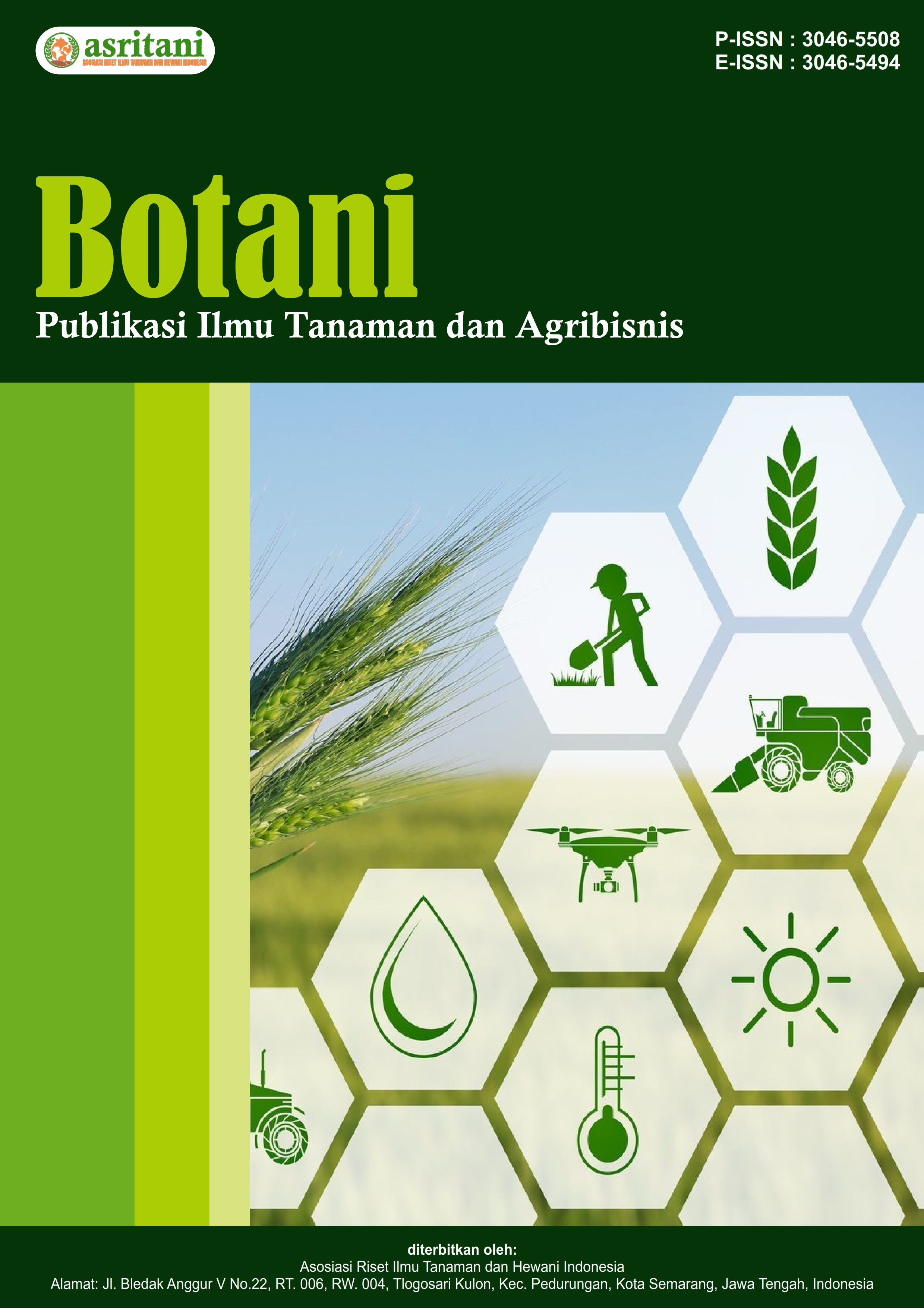Evaluasi Dampak Kondisi Lahan Tergenang Terhadap Produksi Kelapa Sawit
DOI:
https://doi.org/10.62951/botani.v2i2.316Keywords:
Oil Palm, Yield, Flooded Land, ProductivityAbstract
Oil palm (Elaeis guineensis Jacq) is a key strategic commodity in Indonesia, playing a vital role in national exports and supporting various industries, including food production and renewable energy. Harvesting is a critical phase in oil palm cultivation, and its outcomes are significantly influenced by agronomic practices and environmental conditions, such as waterlogging. This study aimed to compare oil palm yields between waterlogged and non-waterlogged fields and to assess the statistical significance of any differences observed. The research was conducted at Tanjung Buluh Estate, Division 3 of PT Socfin Indonesia, located in Teluk Mengkudu, North Sumatra. A Randomized Complete Block Design (RCBD) was employed, focusing on a single factor: land condition (waterlogged vs. non-waterlogged). Results showed that the average fresh fruit bunch (FFB) yield from non-waterlogged plots was 109.4 kg, notably higher than the 78.9 kg recorded in waterlogged areas. A T-test yielded a P-value of 0.0929, approaching the 10% significance threshold, suggesting that waterlogging can potentially reduce oil palm productivity.
References
Nainggolan, H. L., Gulo, C. K., Waruwu, W. S., Egentina, T., & Manalu, T. P. (2021). Strategi pengelolaan usahatani kelapa sawit rakyat masa pandemi Covid-19 di Kecamatan STM Hilir Kabupaten Deli Serdang, Provinsi Sumatera Utara, Indonesia. Agricultural Journal, 4(2), 260–275.
Nasution, R., & Simatupang, T. (2020). The impact of drainage quality on palm oil yield in peatlands. Indonesia Journal of Agriculture, 15(2), 55–62.
Nugraha, A., Kharisma, B., & Heryanto, M. A. (2020). Penetapan batas luas maksimum penggunaan lahan untuk usaha perkebunan kelapa sawit: Pendekatan analisis sistem dan analytical network process (ANP). Media Trend, 15(1), 1–18. https://doi.org/10.21107/mediatrend.v15i1.5272
Nugroho, A. (2019). Buku ajar teknologi agroindustri kelapa sawit. Lambung Mengkurat Universitas Press. https://www.researchgate.net/profile/Agung-Nugroho13/publication/337315913_Buku_Teknologi_Agroindustri_Kelapa_Sawit/links/5dd169
Purnomo, H. (2019). Pengaruh genangan air terhadap pertumbuhan dan hasil tanaman. Jurnal Agronomi Indonesia, 47(3), 203–210.
Susanto, S., & Marpaung, J. V. (2010). Perancangan kendaraan panen kelapa sawit. Jurnal Inosains, 15(2).
Tata, H. L., Sipriyanto, B., & Widiastuti, R. (2021). Effects of flooding stress on oil palm productivity and strategies for mitigation. Jurnal Agronomi Indonesia, 49(1), 47–56.
Yuliana, L., & Hartono, A. (2022). Kajian produktivitas kelapa sawit pada berbagai kondisi kelembaban lahan. Jurnal Ilmu Pertanian Tropis, 9(3), 211–220.
Downloads
Published
How to Cite
Issue
Section
License
Copyright (c) 2025 Botani : Publikasi Ilmu Tanaman dan Agribisnis

This work is licensed under a Creative Commons Attribution-ShareAlike 4.0 International License.





